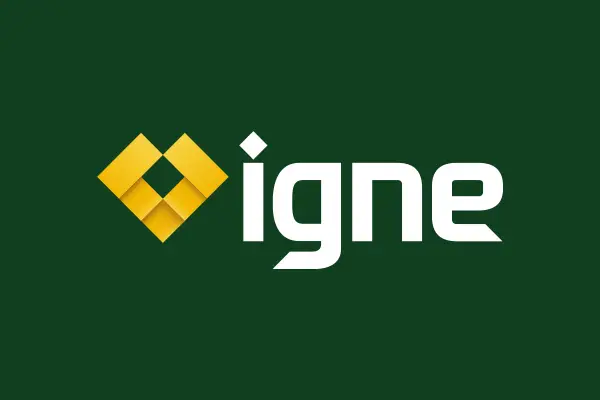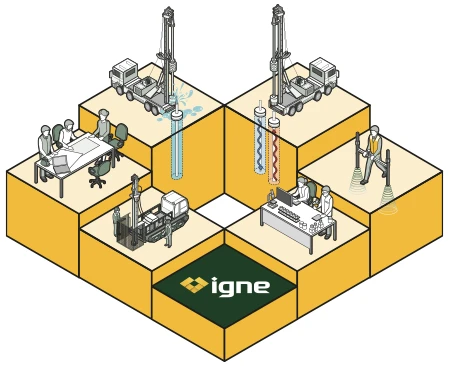

Elevation Scans as Part of Measured Building Surveys
Elevation scans are a specialised survey technique used to capture detailed, high-resolution measurements of a building’s external surfaces.
About
What are Elevation Scans in Surveys?
Elevation scans play a crucial role in the planning and development of building projects, providing detailed information about the vertical aspects of a structure’s façade. These scans are a key part of measured building surveys, helping architects, engineers, and project managers understand the precise dimensions and features of a building’s external surfaces.
Igne offers advanced elevation scanning services that deliver highly accurate, comprehensive data, ensuring your project is built on a foundation of precise information.
These scans create accurate digital representations of a building’s façade, including windows, doors, structural elements, and decorative features.
Elevation scanning is commonly used in architectural design, refurbishment projects, conservation efforts, and structural assessments.
At Igne, we use cutting-edge 3D laser scanning technology to perform elevation scans, allowing us to capture even the smallest details of a building’s external structure. The data from these scans is processed into highly detailed elevation drawings, which can be used for various applications, from design planning to regulatory compliance.

Useage
Why Carry Out Elevation Scans as Part of Measured Building Surveys?
Elevation scans are essential for these reasons:
Accurate Architectural Design
Elevation scans provide architects with the detailed data they need to design modifications or renovations that are compatible with the existing structure. Accurate measurements ensure that designs fit perfectly with the building’s dimensions and features.
Building Maintenance & Restoration
For older or heritage buildings, elevation scans help identify areas that need repair or restoration, capturing the intricacies of the building’s exterior in fine detail. This ensures that any repairs or alterations maintain the original aesthetic and structural integrity.
Compliance Planning & Building Regulations
Many building projects require accurate elevation data to meet local planning requirements and building regulations. Elevation scans ensure that your project complies with all necessary standards by providing precise documentation of the building’s external features.
Communication with Stakeholders
Detailed elevation scans allow for clear communication between project teams, including architects, engineers, and contractors, ensuring that everyone has access to the same accurate data when making decisions.
Trust
Why Trust & Commission Igne’s Elevation Scanning Services?
Igne is a trusted provider of high-quality site investigation and surveying services, and our elevation scanning services are no exception. Here’s why you should choose Igne for your elevation scanning needs:
Expertise & Experience
With years of experience in site investigation and geotechnical testing, Igne has built a reputation for delivering accurate and reliable survey data. Our team of experts uses state-of-the-art equipment to capture precise elevation data, ensuring that your project benefits from the best possible insights.
Cutting-edge Technology
We use advanced 3D laser scanning technology to perform elevation scans. This allows us to capture detailed measurements quickly and efficiently, providing you with accurate data in a fraction of the time traditional methods would take.
Customised Solutions
Every project is unique, and we tailor our elevation scanning services to meet the specific needs of your site. Whether you need basic elevation drawings or detailed 3D models, Igne can deliver the results you need to move your project forward.
Comprehensive Reporting
Our elevation scanning services include detailed reports that go beyond just raw data. We provide clear, actionable insights in the form of 2D drawings, 3D models, and other visual representations that make it easy to incorporate the data into your project plans.
Risks
The Risks of Not Doing Elevation Scans Before You Start a Project
Skipping elevation scans before starting a project can lead to risks and potential complications including:
Inaccurate Design Plans
Without precise elevation data, architectural designs may not align with the existing building structure, leading to costly revisions and delays later in the project.
Structural Issues
Failing to capture detailed measurements of a building’s exterior can result in overlooking critical structural elements, leading to potential safety hazards or the need for unplanned modifications.
Regulatory Non-Compliance
Many projects require accurate elevation data to comply with local planning and building regulations. Without this data, you may face fines, project delays, or even the need to redo certain phases of the project to meet regulatory standards.
Cost Overruns
Inaccurate or incomplete elevation data can lead to unexpected costs as adjustments are made during construction. Ensuring that you have precise data from the outset helps avoid these additional expenses.
Benefits
The Benefits of Scanning Elevations
There are numerous benefits to conducting elevation scans as part of your measured building survey:
Improved Project Accuracy
Elevation scans provide precise measurements that enable architects and engineers to create accurate design plans, reducing the risk of errors during the construction phase.
Time & Cost Efficiency
By capturing detailed elevation data quickly and accurately, elevation scanning saves time and reduces costs compared to traditional surveying methods. This efficiency helps keep projects on schedule and within budget.
Detailed Visualisation
Elevation scans provide a clear and detailed visual representation of the building’s external structure, making it easier to communicate design intentions and project plans to stakeholders.
Preservation of Heritage Buildings
For heritage or historically significant buildings, elevation scans capture intricate details that help maintain the building’s original character during restoration or renovation projects.
Compliance with Regulations
Accurate elevation scans ensure that your project meets all relevant building and planning regulations, reducing the risk of delays or fines due to non-compliance.
Process
How Elevation Scanning is Done
At Igne, elevation scanning is a precise and efficient process, using advanced 3D laser scanning technology to capture detailed measurements of a building’s exterior. Here’s a summary of how we carry out our elevation scans:
- Initial Consultation
Before starting the survey, we work closely with clients to understand the specific needs of the project. This allows us to tailor our scanning process to deliver the most relevant data. - On-Site Scanning
Our team arrives on-site with 3D laser scanning equipment, which emits laser beams to capture millions of data points across the building’s external surface. This creates a highly detailed point cloud that represents the building’s façade. - Data Processing
Once the scanning is complete, we process the data to generate accurate elevation drawings or 3D models. These visualisations can be customised to meet the specific requirements of the project. - Report Delivery
The final step is delivering the processed data to the client, complete with detailed elevation scans, measurements, and visual representations that can be used for design, planning, or compliance purposes.
Learn More
Frequently Asked Questions about Elevation Scanning in Measured Building Surveys
- What is an elevation scan in surveying?
An elevation scan is a detailed measurement of a building’s external surfaces, capturing the vertical elements of the structure such as walls, windows, doors, and decorative features.
- Why are elevation scans important?
Elevation scans provide accurate data that is essential for architectural design, renovation, regulatory compliance, and building maintenance. They help ensure that plans align with the building’s actual structure.
- How accurate are elevation scans?
Elevation scans using 3D laser scanning technology are highly accurate, often down to millimetres. This ensures that the data is precise enough for design and planning purposes.
- How long does an elevation scan take?
The time required for an elevation scan depends on the size and complexity of the building. However, most scans can be completed within a day, with data processing taking a few additional days.
- What types of buildings can benefit from elevation scans?
Elevation scans are useful for all types of buildings, including residential, commercial, industrial, and heritage properties. They are especially beneficial for projects that involve renovation, refurbishment, or restoration.
- What formats are elevation scans delivered in?
Igne provides elevation scan data in a range of formats, including 2D CAD drawings, 3D models, and other visual representations depending on the client’s requirements.
The Next Step
If you need accurate, reliable elevation scanning services to support your next project, trust Igne’s expert survey team to deliver.
Our advanced 3D laser scanning technology ensures you receive precise data to guide your project’s success.
Contact us today to learn more about our elevation scanning services and explore the full range of measured building surveys we offer to help you de-risk and optimise your project.
